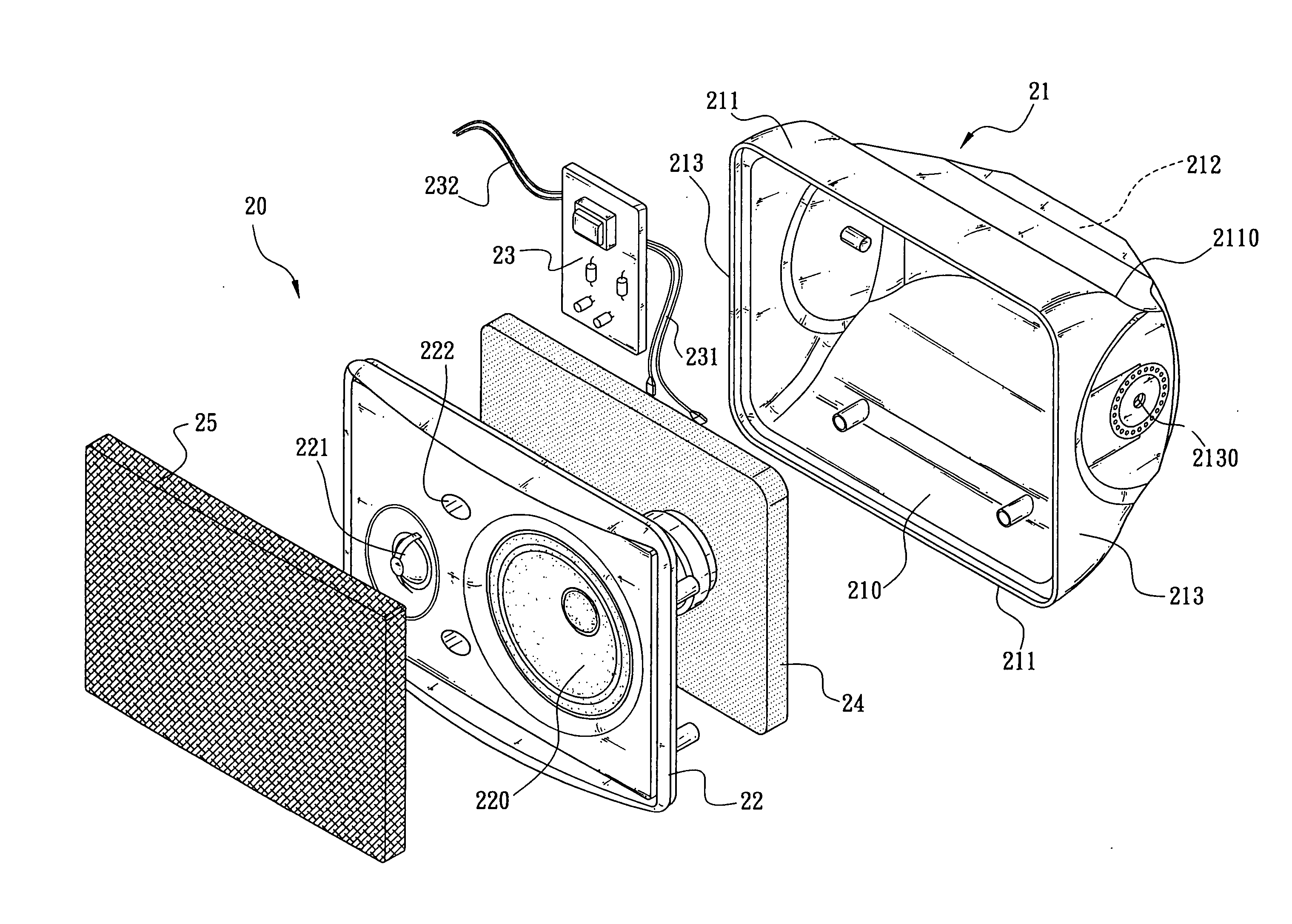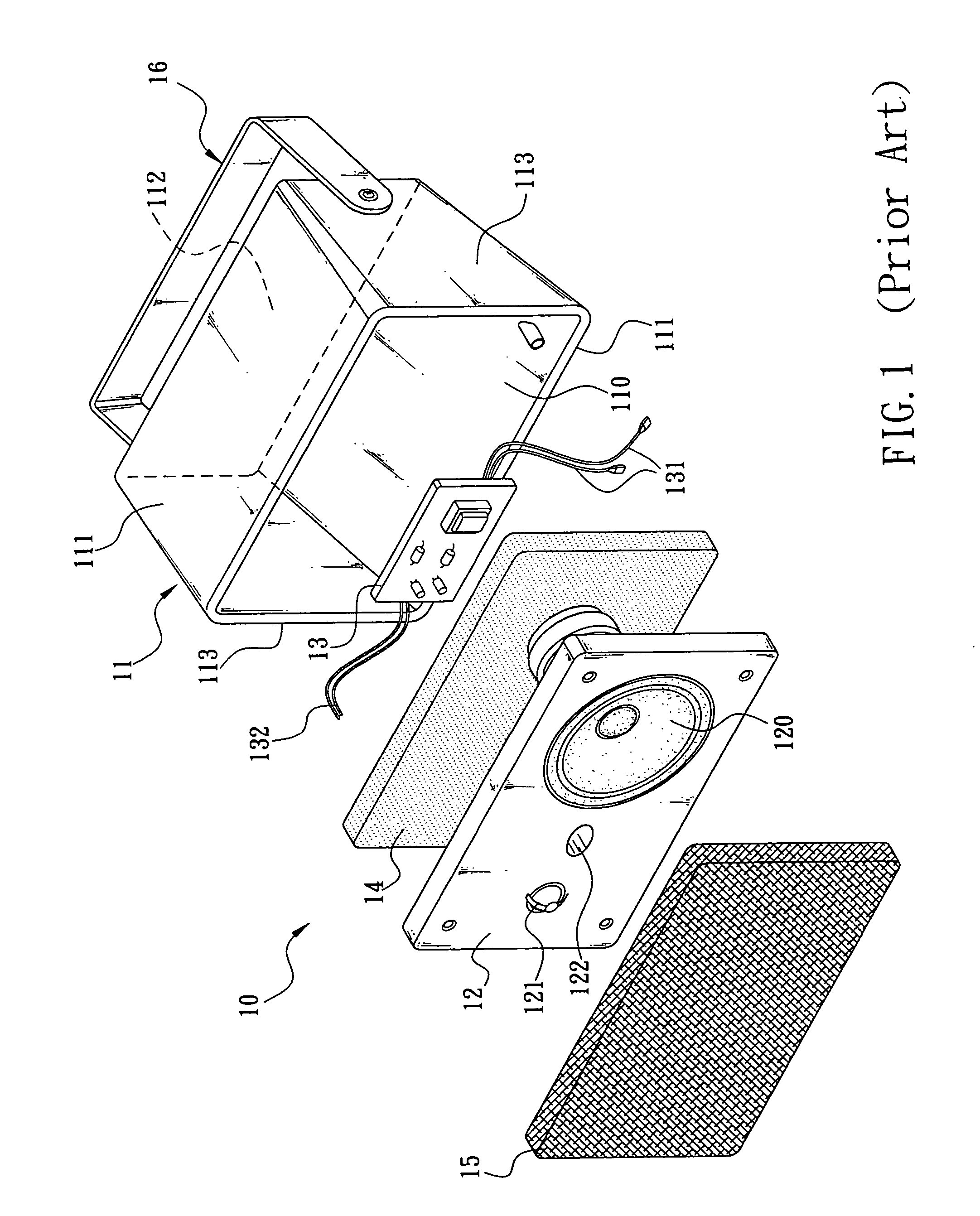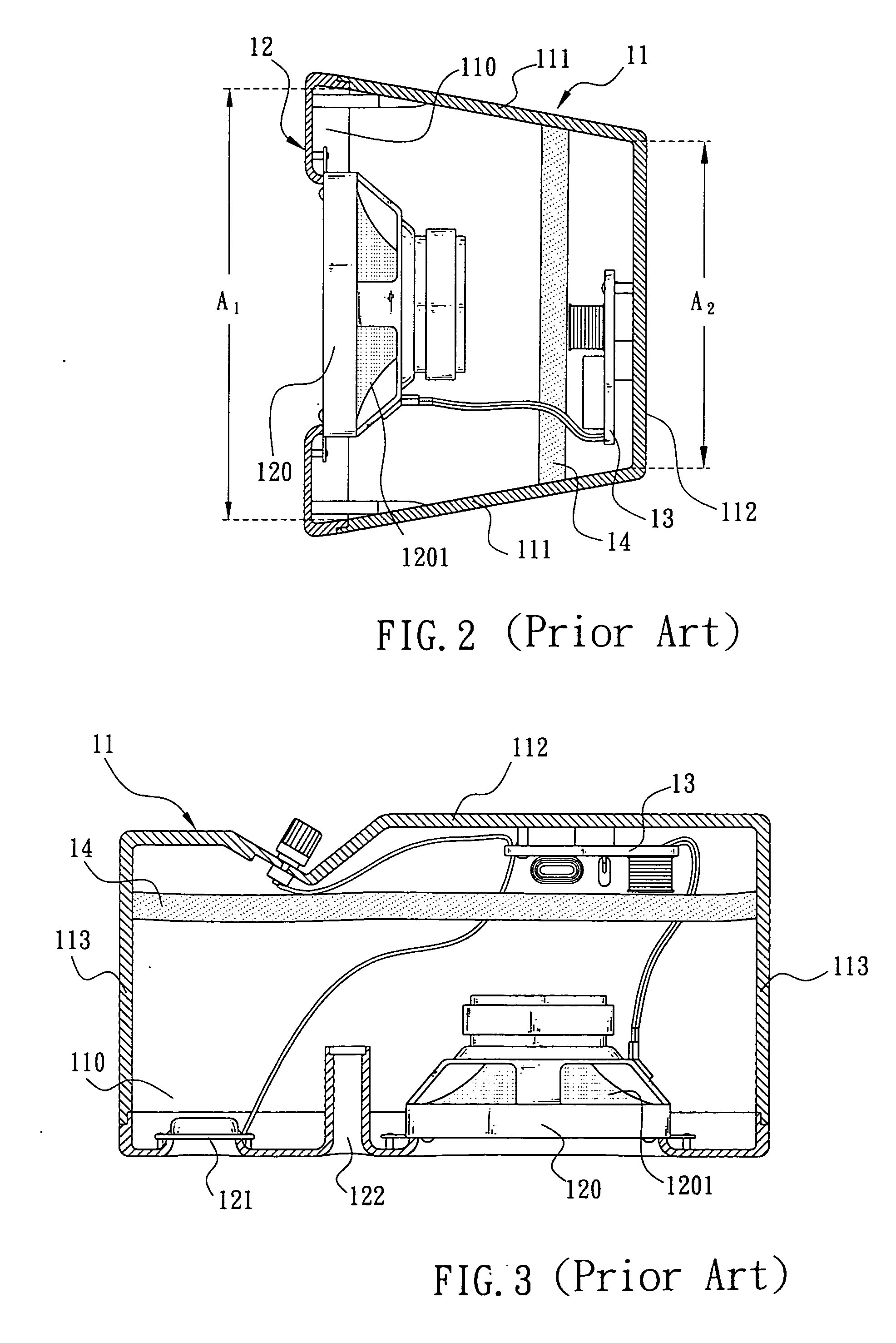Speaker cabinet with increased air circulation efficiency
a technology of air circulation efficiency and speaker cabinet, which is applied in the direction of electrical transducer details, cabinet/cabinet/drawer, electric apparatus casing/cabinet/drawer, etc., can solve the problems of adversely affecting the vibration of the diaphragm, prior design suffered a disadvantage, and interfere with low-frequency sounds, etc., to facilitate air circulation, increase the ratio of an opening to an area of the rear, and strengthen the low-frequency resonance of the cabin
- Summary
- Abstract
- Description
- Claims
- Application Information
AI Technical Summary
Benefits of technology
Problems solved by technology
Method used
Image
Examples
Embodiment Construction
[0016] Referring to FIG. 4, there is shown a speaker cabinet 20 with increased air circulation efficiency in accordance with the invention. As shown, the speaker cabinet 20 comprises a hollow case 21 and a cover 22. The hollow case 21 comprises a front opening 210, a wavy top 211, a wavy bottom 211, and a rear 212 in which the top 211 and the bottom 211 are wavily tapered from a pair of opposite edges of the opening 210 to the rear 212. Two sides 213 of the hollow case 21 are also extended parallel from another pair of opposite edges of the opening 210 to the rear 212. In other words, the area of the rear 212 is smaller than that of the opening 210. A pivot hole 2130 is provided at either side 213 proximate the rear 212. A bracket (not shown) can be provided at the pivot holes 2130 for fastening the hollow case 21 at a predetermined place. A sound control circuit 23 is provided on the inner surface of the rear 212 within the hollow case 21. The sound control circuit 23 is used to re...
PUM
 Login to View More
Login to View More Abstract
Description
Claims
Application Information
 Login to View More
Login to View More - R&D
- Intellectual Property
- Life Sciences
- Materials
- Tech Scout
- Unparalleled Data Quality
- Higher Quality Content
- 60% Fewer Hallucinations
Browse by: Latest US Patents, China's latest patents, Technical Efficacy Thesaurus, Application Domain, Technology Topic, Popular Technical Reports.
© 2025 PatSnap. All rights reserved.Legal|Privacy policy|Modern Slavery Act Transparency Statement|Sitemap|About US| Contact US: help@patsnap.com



